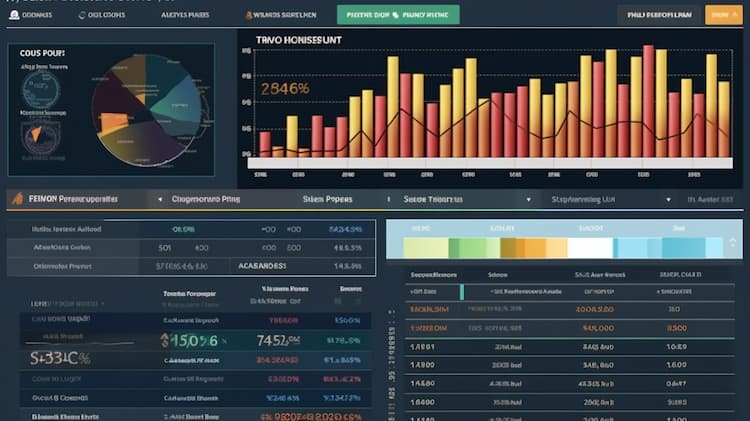
What is the QDEF ETF ?
Discover the DRN ETF and QDEF ETF - A comprehensive overview of two popular exchange-traded funds (ETFs) in the financial market. Explore their key features, investment strategies, and potential benefits for investors.
FlexShares Trust, the issuer behind the FlexShares Quality Dividend Defensive Index Fund (QDEF), aims to provide investors exposure to a high-quality income-oriented universe of U.S. equity securities. Managed by Northern Trust Investments, Inc., FlexShares focuses on long-term capital growth while maintaining a targeted overall beta that generally ranges from 0.5 to 1.0 times that of its Parent Index. Employing a transparent, rules-based approach to security selection and weighting, the issuer emphasizes management efficiency, profitability, and cash flow in its proprietary quality scoring model to construct the underlying index for QDEF.
The FlexShares Quality Dividend Defensive Index Fund (QDEF) seeks to provide exposure to a high-quality income-oriented universe of long-only U.S. equity securities, emphasizing long-term capital growth and a targeted overall beta generally between 0.5 to 1.0 times that of the Northern Trust 1250 Index. The fund employs a proprietary quality scoring model to select and weight eligible securities, aiming to maximize overall quality scores relative to the parent index. QDEF's dividend-focused strategy aims to achieve an aggregate dividend yield in excess of the parent index, making it an attractive choice for investors seeking income from quality U.S. equities.
The FlexShares Quality Dividend Defensive Index Fund (QDEF) offers investors a unique approach to gain exposure to a high-quality income-oriented universe of U.S. equity securities. QDEF's underlying index is designed to track companies that exhibit strong management efficiency, profitability, and cash flow generation. By aiming to maintain an overall beta generally between 0.5 to 1.0 times that of the Northern Trust 1250 Index, QDEF provides a balance between capital growth and stability, making it an attractive option for those seeking to track quality income-oriented investments.
The FlexShares Quality Dividend Defensive Index Fund (QDEF) seeks to track the performance of a selection of high-quality income-oriented U.S. equity securities. QDEF's underlying index aims to provide exposure to companies with a focus on long-term capital growth and a targeted overall beta range. By employing a proprietary quality scoring model, the index aims to achieve a balance between quality, profitability, and cash flow metrics, resulting in a portfolio that can potentially deliver a correlation yield exceeding that of its parent index while maintaining a targeted beta range.
The FlexShares Quality Dividend Defensive Index Fund (QDEF) focuses on providing exposure to a high-quality income-oriented universe of U.S. equity securities. QDEF aims to track the performance of the Northern Trust Quality Dividend Defensive Index, which emphasizes long-term capital growth and targets a beta generally between 0.5 to 1.0 times that of the Northern Trust 1250 Index. By selecting companies with strong management efficiency, profitability, and cash flow generation, the QDEF ETF offers investors an opportunity to access a portfolio of stocks with a focus on quality within the equity market.
The FlexShares Quality Dividend Defensive Index Fund (QDEF) seeks to provide exposure to a high-quality income-oriented universe of U.S. equity securities, emphasizing long-term capital growth and maintaining a targeted overall beta generally between 0.5 to 1.0 times that of the Northern Trust 1250 Index. The underlying index, designed by Northern Trust, applies a proprietary quality scoring model to assess management efficiency, profitability, and cash flow. By selecting and weighting securities based on their quality scores, QDEF aims to deliver consistent quality and dividend-focused exposure to investors while mitigating overall active risk exposure to single factors.

ETF Insider is a data-driven portfolio analytics and optimization platform that introduces a more efficient and practical way to visualize, analyze and optimize portfolios.
Rather than focusing on the surface-level attributes of ETFs and Mutual Funds, ETF Insider goes deeper by examining the underlying holdings of exchange traded products.
By organizing and structuring that data, investors can easily navigate within their overlapping layers.
This innovative perspective combined with modern data visualization and modeling tools, provides an entirely new approach to portfolio optimization that can quickly expose both portfolio inefficiencies and opportunities.

Discover the DRN ETF and QDEF ETF - A comprehensive overview of two popular exchange-traded funds (ETFs) in the financial market. Explore their key features, investment strategies, and potential benefits for investors.

The CIL ETF is a specialized investment fund that focuses on global companies in the relevant sectors. This exchange-traded fund offers investors exposure to a diverse range of innovative and cutting-edge companies engaged in advancements in the industry. Discover the potential growth opportunities and risks associated with investing in this dynamic sector through the CIL ETF.

The BUFB ETF is a specialized investment fund that focuses on global companies in the relevant sectors. This exchange-traded fund offers investors exposure to a diverse range of innovative and cutting-edge companies engaged in advancements in the industry. Discover the potential growth opportunities and risks associated with investing in this dynamic sector through the BUFB ETF.
ETF Insider is a novel portfolio optimization tool that uses the power of data visualization to gain insight into portfolio compositions, concentration risks, portfolio efficiency and more. Complex financial data can be transformed into visually appealing and easily digestible graphs and charts, allowing investors to quickly identify trends and make well-informed investment decisions. Not only does this save time, but it also increases the accuracy and effectiveness of portfolio management.